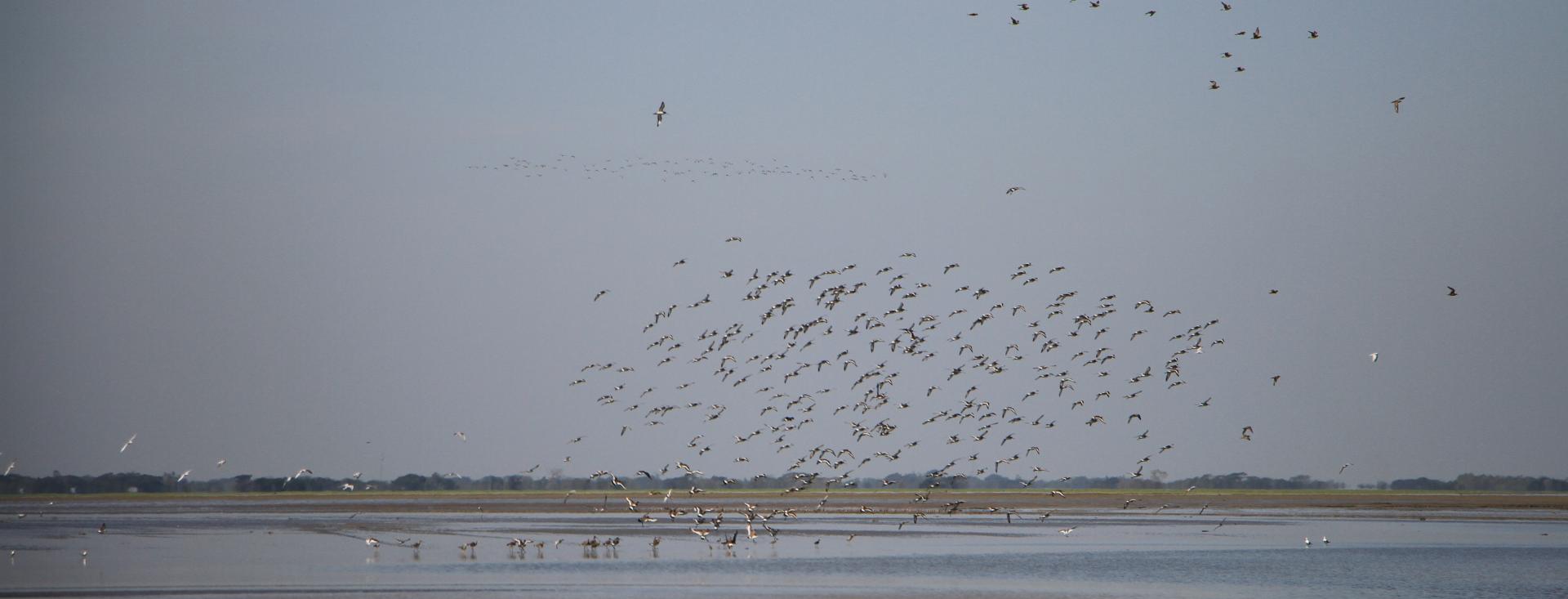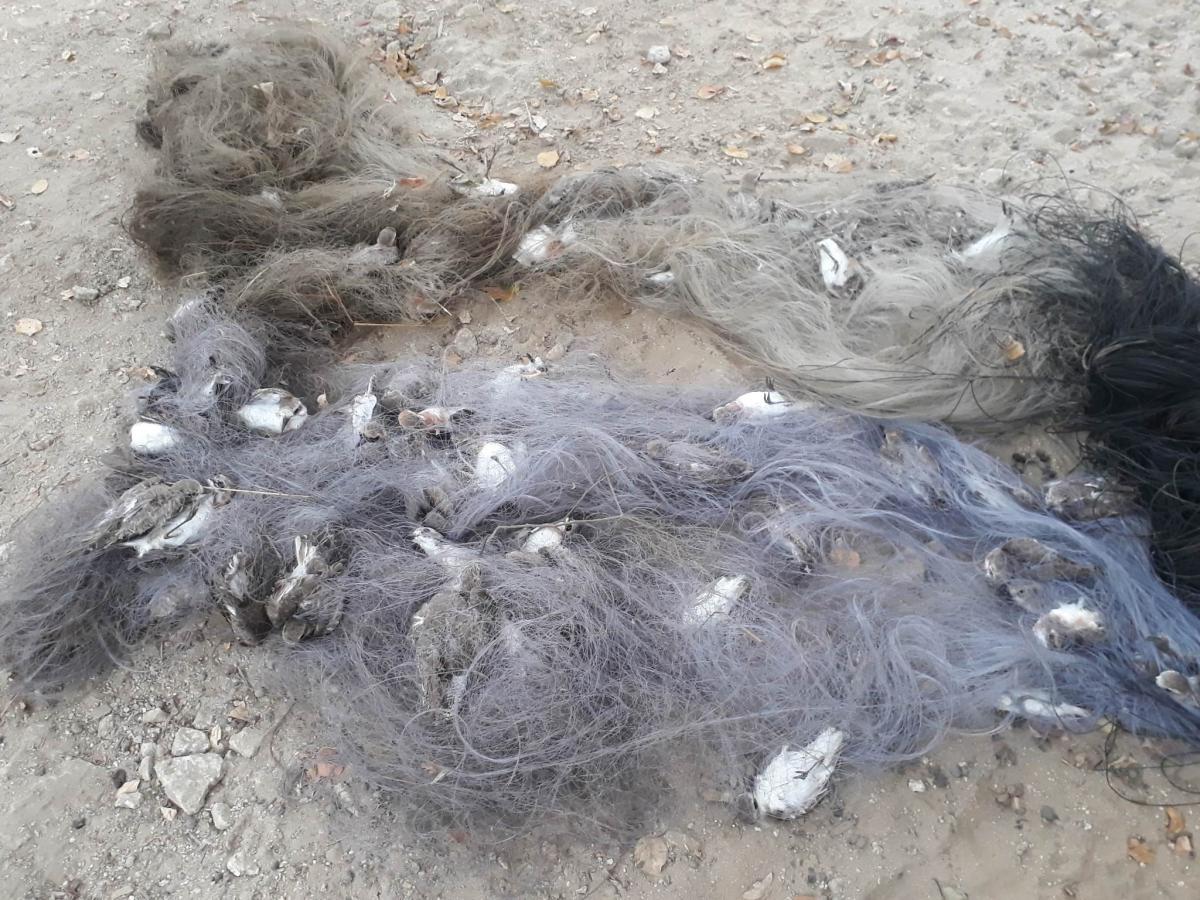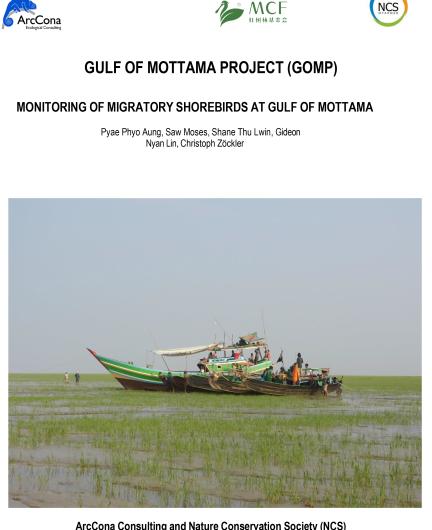The GoM is identified as the most extensive and significant intertidal mudflat system in Myanmar for shorebirds, fish, and other biodiversity. Its highly productive intertidal mudflats provide a wintering site for an estimated 150,000–200,000 waterbirds, including Critically Endangered Spoon-billed Sandpipers (Calidris pygmaea), Endangered Nordmann’s Greenshanks (Tringa guttifer), and Great Knots (Calidris tenuirostris). In GoM, over 70 waterbird species have been recorded. The spoon-billed sandpiper (SBS) can be seen as a flagship species for the GoM. Breeding in Russia, the SBS annually migrates more than 8,000 km to winter at sites in South and Southeast Asia along the East-Asian Australasian Flyway (EAAF). Of an estimated global population of 120–200 pairs, over 50% are estimated to winter regularly in Myanmar, primarily in the GoM. As an important wintering site, the GoM is vital to ensuring the vitality of the small remaining population.
Shorebird
Shorebird
The GoM is identified as the most extensive and significant intertidal mudflat system in Myanmar for shorebirds, fish, and other biodiversity. Its highly productive intertidal mudflats provide a wintering site for an estimated 150,000–200,000 waterbirds, including Critically Endangered Spoon-billed Sandpipers (Calidris pygmaea), Endangered Nordmann’s Greenshanks (Tringa guttifer), and Great Knots (Calidris tenuirostris). In GoM, over 70 waterbird species have been recorded. The spoon-billed sandpiper (SBS) can be seen as a flagship species for the GoM. Breeding in Russia, the SBS annually migrates more than 8,000 km to winter at sites in South and Southeast Asia along the East-Asian Australasian Flyway (EAAF). Of an estimated global population of 120–200 pairs, over 50% are estimated to winter regularly in Myanmar, primarily in the GoM. As an important wintering site, the GoM is vital to ensuring the vitality of the small remaining population.
Recognizing the importance of GoM for shorebirds, an annual shorebird survey was conducted in collaboration with the Biodiversity and Nature Conservation Association (BANCA), the Nature Conservation Society (NCS), Local Conservation Groups (LCGs), Gulf of Mottama Project (GoMP) and international experts. In addition to the regular surveys, the LCGs are working together with communities to patrol shorebird hunting and trade in local markets.
KEY Highlights
The survey recorded a total of approximately 60,000 waders of 53 species in the survey area from 20 to 25 January 2023. The survey recorded 9 cridically endangered Sppon-billed Sanpipers (SBS) and estimated to have 16 individuals in total in the Gulf of Mottama, based on the SBS propotion in 198 flock counts of over 32,194 birds which was extrapolated to a estamate of 56,200 birds of small waders in the survey area.
The shorebirds in the Gulf of Mottama are still being attacked by the local bird hunters. According to local conservation groups (LCGs), most bird hunters are using disposable fishing nets to trap the birds.
Photo © Than Htike - The shorebirds were trapped at disposable fishing nets used by bird hunters at Kar Tae Village, Paung Township, Mon State.
Additional Resources
Before conducting the ground survey, previous survey results were reviewed particularly for the same survey area...
With the support of the Mangrove Conservation Fund (MCF), Manfred Hermsem Foundation (MHF) and the Gulf of Mottama...





